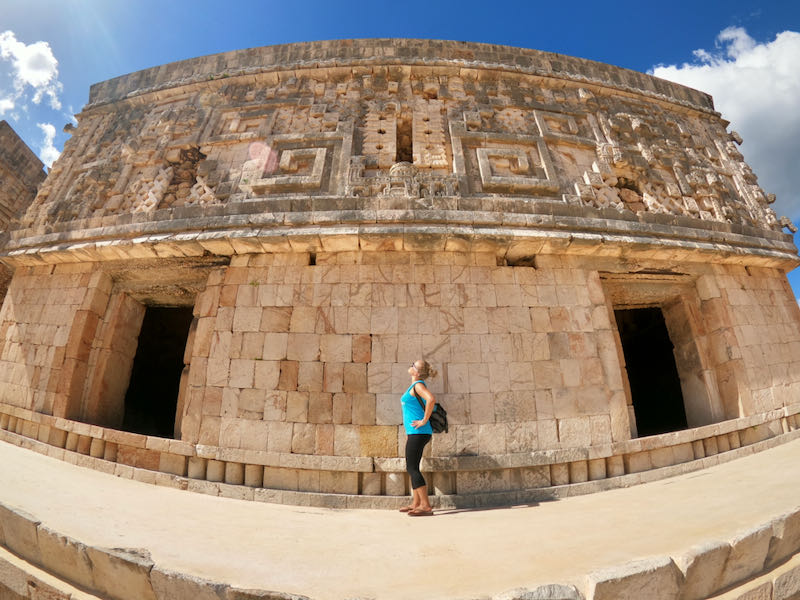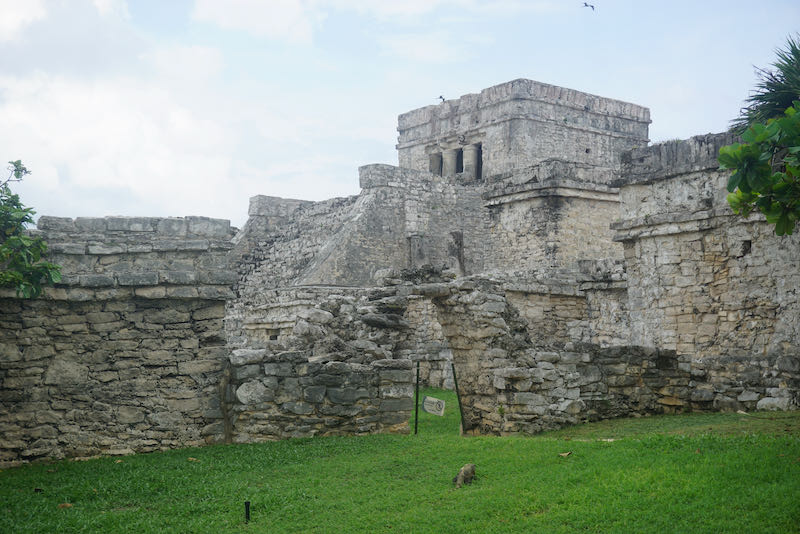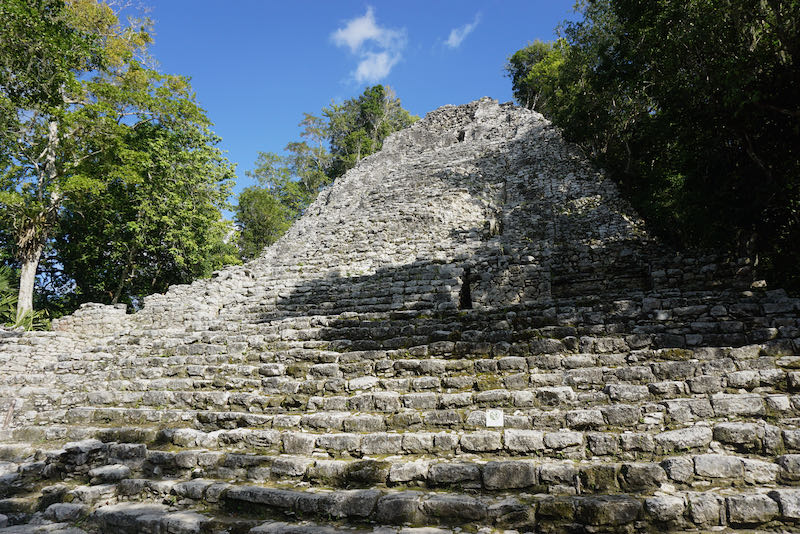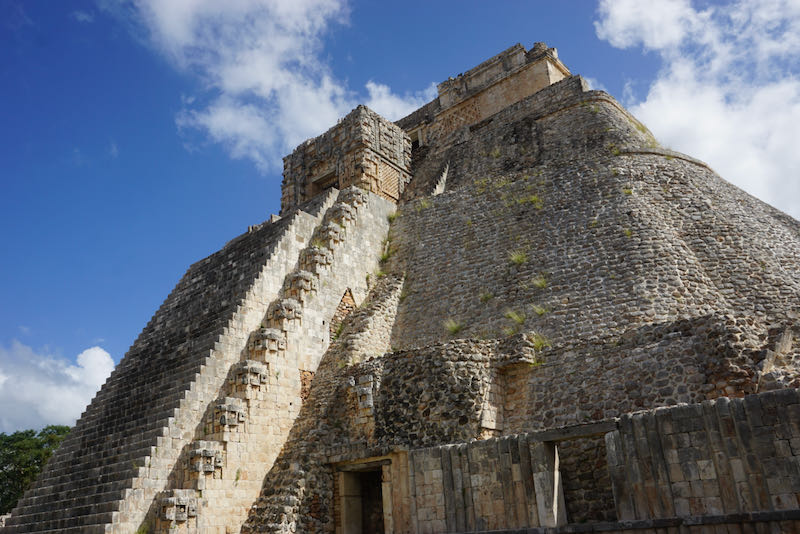The Ruins of Mexico (Part Two) Posted by sasha on Oct 13, 2021 in History, Travel & Geography
In my last post, we learned about some of the most famous ruins in Mexico. You can click here to read it in case you missed it. Hoy vamos a continuar nuestro viaje a las ruinas de México (Today we’re going to continue our trip to the ruins of Mexico). After all, there are amazing ruins to explore all over the country. First up, let’s head to the state of Quintana Roo to explore a few of the Mayan ruins there. As I did in Part One, I’ve also included videos from INAH to add a good Spanish listening exercise. Just turn on the closed captions on YouTube to make it a reading activity as well.
Tulum
Nuestra primera parada es la Zona Arqueológica de Tulum (Our first stop is the Tulum Archaeological Zone). The original name for this site is believed to be Zamá, meaning City of Dawn. The current name means “wall” or “trench” in Mayan. Both names make perfect sense, as it faces the sunrise and is fortified by walls.
Fue una de las últimas ciudades construidas por los mayas (It was one of the last cities built by the Maya). The earliest inscription here dates back to 564 AD and it was at its height between the 13th and 15th centuries. This is known as the Post-Classical Period of the Maya. At that time, Tulum’s population was between 1,000-1,500.
La ciudad fue construida sobre acantilados con vista al mar caribe (The city was built on cliffs overlooking the Caribbean Sea). With steep cliffs and the open sea on one side and a wall around the others, the city was very protected from invaders. It worked for quite some time, but Old World diseases brought by the Spanish eventually led to the demise of Tulum.
Hoy las ruinas son un lugar muy popular para visitar (Today the ruins are a very popular place to visit). It’s definitely one of the most picturesque of the many Mayan Ruins due to its location. You can even go down to the beach for a swim here!
It’s very easy to visit the ruins of Tulum. You can easily jump on a tour from Cancun or Playa del Carmen. ¡Es mejor coger un colectivo y practicar tu español! (It’s better to take a colectivo and practice your Spanish!). I recommend you just stay in the town of Tulum and rent a bicycle to get out there.
Cobá
Cobá es un yacimiento arqueológico que es unos cuarenta kilómetros al noroeste de Tulum (Cobá is an archaeological site that is about forty kilometers northwest of Tulum). It’s only about an hour by car between the two, so it’s definitely possible to visit both in a day if you start early.
La ciudad se desarrolló cerca de algunos lagos (The city developed around some lakes). Surely, these lakes played a large role in the development of the city. That’s probably where it got the name, which means “water stirred by wind.”
At its peak, the city had a population of around 50,000 and was a very important center during the Classical Period of the Maya. Su economía se basaba en la agricultura y la caza (Their economy was based on agriculture and hunting).
One of the defining characteristics of Coba are the sacbé, a word meaning “white road” in Mayan. These are raised pathways that were used to connect the plazas and temples within a city, but there were also some longer ones that reached other cities. To walk along one of these is to actually walk in the footsteps of the Maya.
Todavía puedes subir a la cima de la Pirámide de Nohoch Mul (You can still climb to the top of the Pyramid of Nohoch Mul). It’s about 130 steep steps to get up there, but it’s well worth the effort. You’re rewarded with some pretty incredible views of the jungle up here.
Uxmal
Uxmal es una antigua ciudad maya en el estado de Yucatán (Uxmal is an ancient Mayan city in the state of Yucatán). The name means “built three times” in Mayan. It’s not far from the state’s capital of Mérida, which serves as the perfect base to visit the ruins.
Es uno de los yacimientos arqueológicos más importantes de los mayas (It is one of the most important archaeological sites of the Mayans). It was designated a UNESCO World Heritage Site in 1996.
The buildings at Uxmal are representative of the Puuc style, meaning “hill” in Mayan. It’s really an impressive site to visit, especially la Pirámide del Adivino (the Pyramid of the Magician) and el Palacio del Gobernador (the Governor’s Palace). All over the site, you’ll see intricate carvings dedicated to Chaac, el dios de la lluvia (the god of the rain).
Puedes pasar un día entero visitando las ruinas de Uxmal (You can spend a whole day visiting the ruins of Uxmal). In fact, you can even stick around into the night to watch a fun light and sound show on the ruins. If you don’t feel like going back to the city, there are a few hotels out here as well.
These are just a few of the many ruins that you can explore across Mexico. Many structures still remain buried under the jungle and excavations are ongoing. Who knows what they’ll discover next. While some of them can be very crowded at times, like Chichen Itza and Tulum, it’s still possible to experience the magic of ancient ruins with little to no crowds at all. Get out there in the jungle to sites like Coba and Uxmal and you’re sure to have an incredible experience. To finish up this short series, I just have one question for you…
¿Qué ruinas de México quieres visitar?

Build vocabulary, practice pronunciation, and more with Transparent Language Online. Available anytime, anywhere, on any device.








Comments:
Cam:
Es genial que haya muchas ruinas diferentes en el mundo. Hay muchos hasta el día de hoy que no se han descubierto y es muy divertido aprender sobre ellos. Lo divertido de encontrar o explorar ruinas antiguas es que aprendemos cosas nuevas sobre las antiguas religiones o las viejas costumbres. Es triste saber que la enfermedad había puesto fin a estas grandes civilizaciones. ¿Hay más para explorar? ¿Hay más que aprender? ¿Qué no sabemos de estas antiguas culturas españolas?